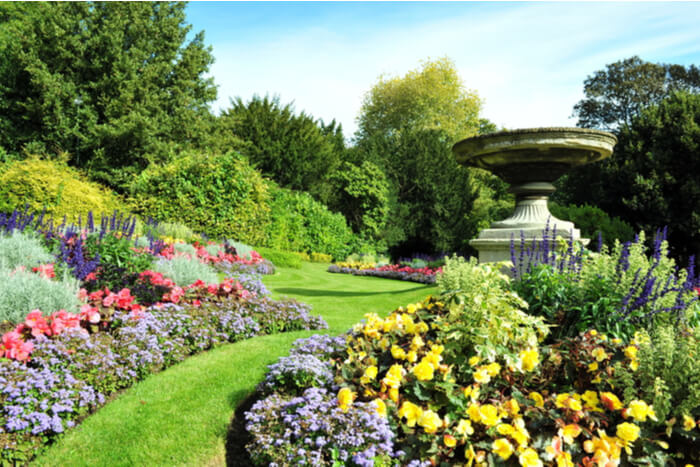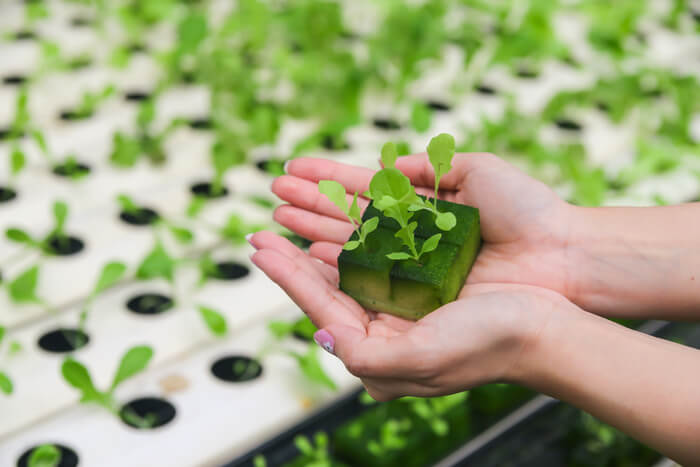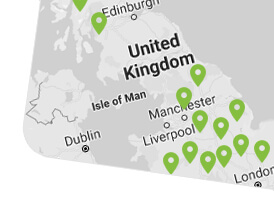Not many people take as much joy in maintaining a garden as they do in creating one next to their log cabin. But, it goes without saying that maintaining a miniature garden is crucial if you want to keep it as fresh as it looked in its first spring. If you take the job of watering plants or removing weeds or turning the soil as a job that needs to be done, then it will definitely consume a great part of your mind and make you feel stressed. But, if you look at gardening as a leisure-time fun activity or as a hobby, then gardening can actually help you relax and loosen up.

Gardening is an activity that you will definitely enjoy, especially when you see the butterflies dancing on the flowers, or flowers taking shape as fruits and veggies that can enhance the taste of your food. Nevertheless, all the things that are involved in maintaining a garden next to your log cabin are crucial. Remember that just by planting your plants it doesn’t mean they will continue flourishing for long. They need a lot more things than just sun and water. Also, there are many more things that you should be aware of to maintain your garden next to log cabin throughout the year. Here we will discuss a few of them:
Upgrade the soil of pots: One of the most important and easiest steps to promote plant life is to replace the soil of the pots. Plants in pots, whether it be with relatively cheap or high-quality soil, will be prone to weeds and pests, but a potting soil supplemented with nutrients will provide the most favourable conditions for growth. A slow releasing mixture of soil is helpful in maintaining the well-being of the plants throughout the season. A mix of 50% old soil and 50% new potting soil is a sound option if you are on a tight budget and can’t invest in new soil in bulk. Soil needs to be enriched with fertilizers so that plants keep getting the nutrients required to flourish. You should also test the soil acidity or pH level with the help of soil testing kits.
Grow plants using seeds: A pocket friendly way to create flower beds and vegetable patches is to grow from seeds. This may seem to be a time-consuming process and your garden may take some time to look as you would like it to look, but investing in the varieties of seeds available is definitely a more cost-effective option when compared to seedlings or potted plants. Initially, you can try planting seeds in potting trays or egg cartons or even in the peel of a citrus fruit, say an orange, and when the plant sprouts or the growth can be seen you can easily transfer it to the pot. Always ensure that you use a good quality potting soil, which is free of parasites, to achieve perfect growth in the early stages. In the process of choosing seeds ensure that you select those that are compatible to the particular growth conditions and climate. You can also find the growth instructions written on the pack of the seeds or over the internet. This will help you get to know about any preferable soil type, garden environment and the best time to start planting.

Lay a good layer of mulch: High quality mulch is sure to provide one of the most desirable and practical additions to your log cabin miniature garden. A thick layer of mulch properly spread over the vegetable patch will definitely help to limit the effects of erosion, assist with retaining moisture, and prevent the growth of weeds. Mulch is also useful for maintaining a more consistent temperature at the time of the growing season. Mulch covered areas, as compared to uncovered areas, are likely to warm up a lot slower.
Divide perennials: Over time perennials overcrowd and lose their vigour. In order to make certain the plants bloom and thrive, they should be divided. Overcrowded plants battle with each other and do not get enough space as well as insufficient nutrients to grow properly. Dividing and re-planting annual plants can also make other areas shine. Most of them can be spread by dividing the root ball and transplanting it to a completely changed location. You can easily divide some of the oldest annual plants in your miniature garden next to your log cabin by digging them out and dividing the roots using the garden fork or spade.
Trimming trees and shrubs: Trimming is another important maintenance activity that ensures your trees and shrubs grow in the perfect shape. Lifeless and hanging stems or branches should be trimmed away so that they do not damage the plant. Most trees and shrubs should be trimmed in early winter or late autumn as this is the time when they are resting. Also their wounds heal quickly during these times of year. Additionally, trimming can speed up the growth of many plants. If minor pruning is required in a plant, then you can do it there and then without thinking about the time of year. Also you should always rake dried leaves.

Till up the land: Another maintenance activity that you should take up in order to maintain your log cabin kit miniature garden is to till up the land. This is a great way to introduce old plants or grass into the earth and give the soil some fresh air and a resting period. You can’t plant anything in the winters because it is too cold and the plants would die, so during this time you can focus on tilling and nurturing the soil for your spring garden next to the log cabin. Your efforts in preparing the land in winters will definitely be rewarded in spring with more vegetables and fruits.
So, if you perform all these activities on a regular basis, you will ensure that your garden next to your log cabin remains aesthetically pleasing and clean throughout the year.












